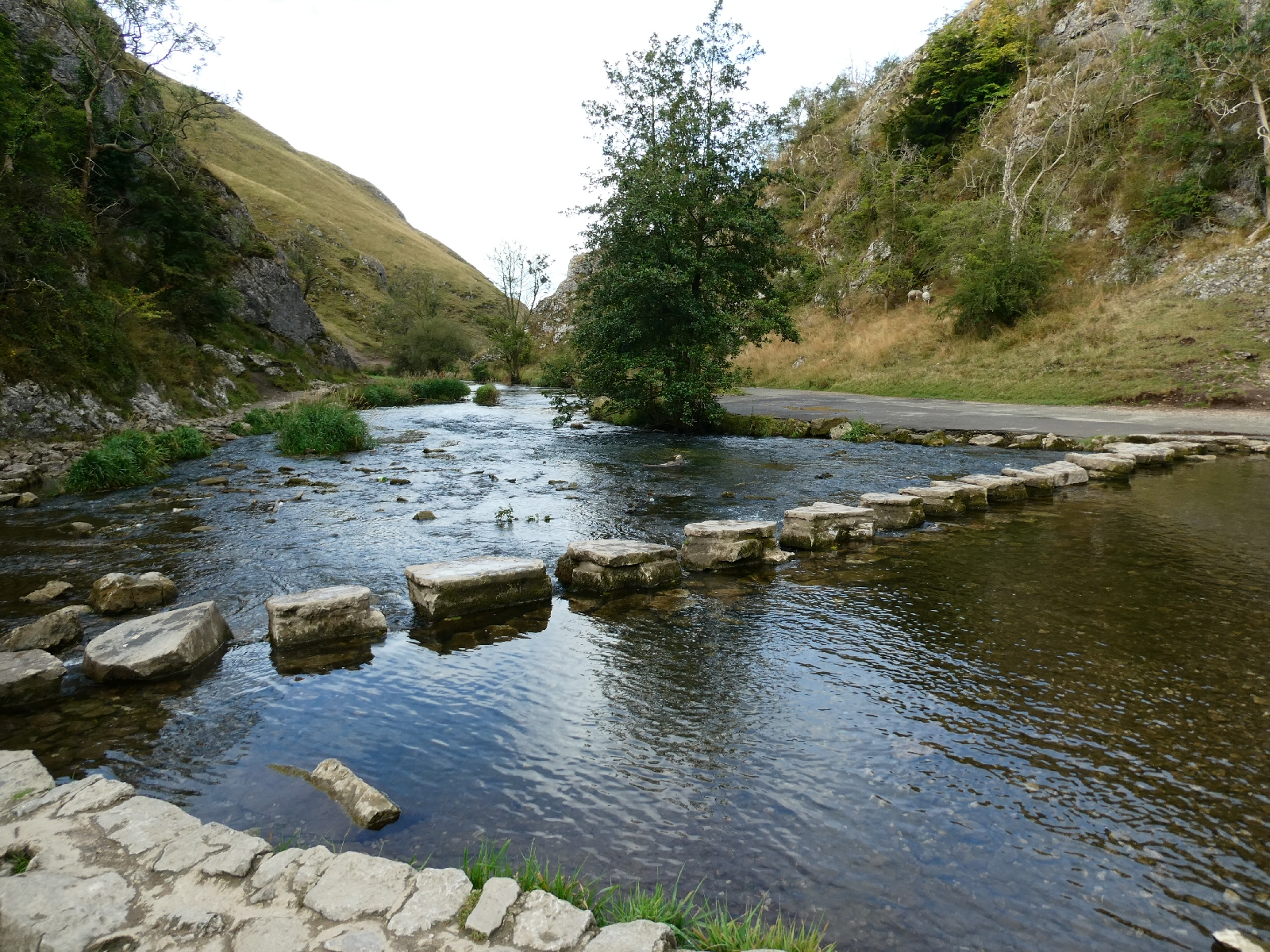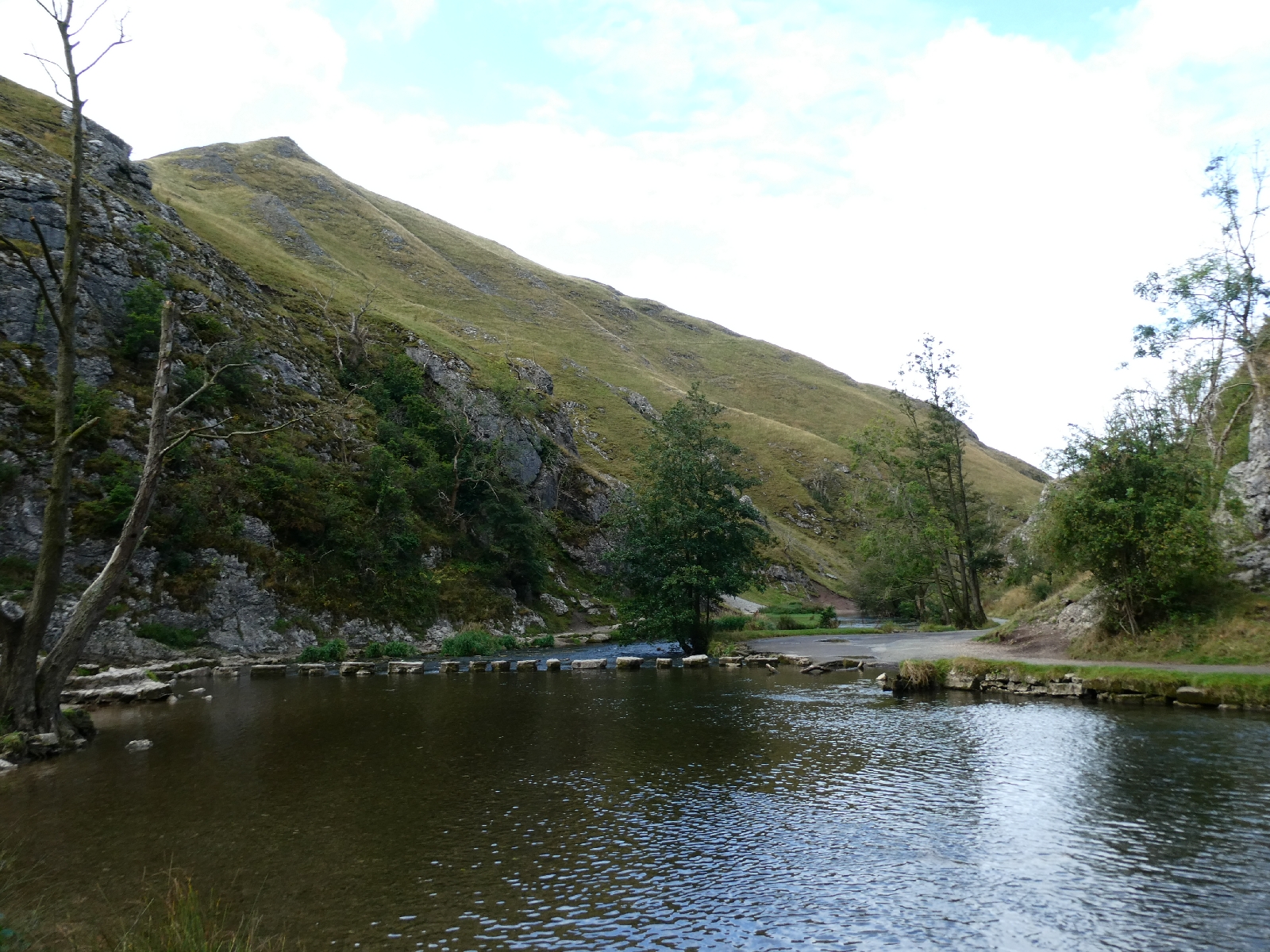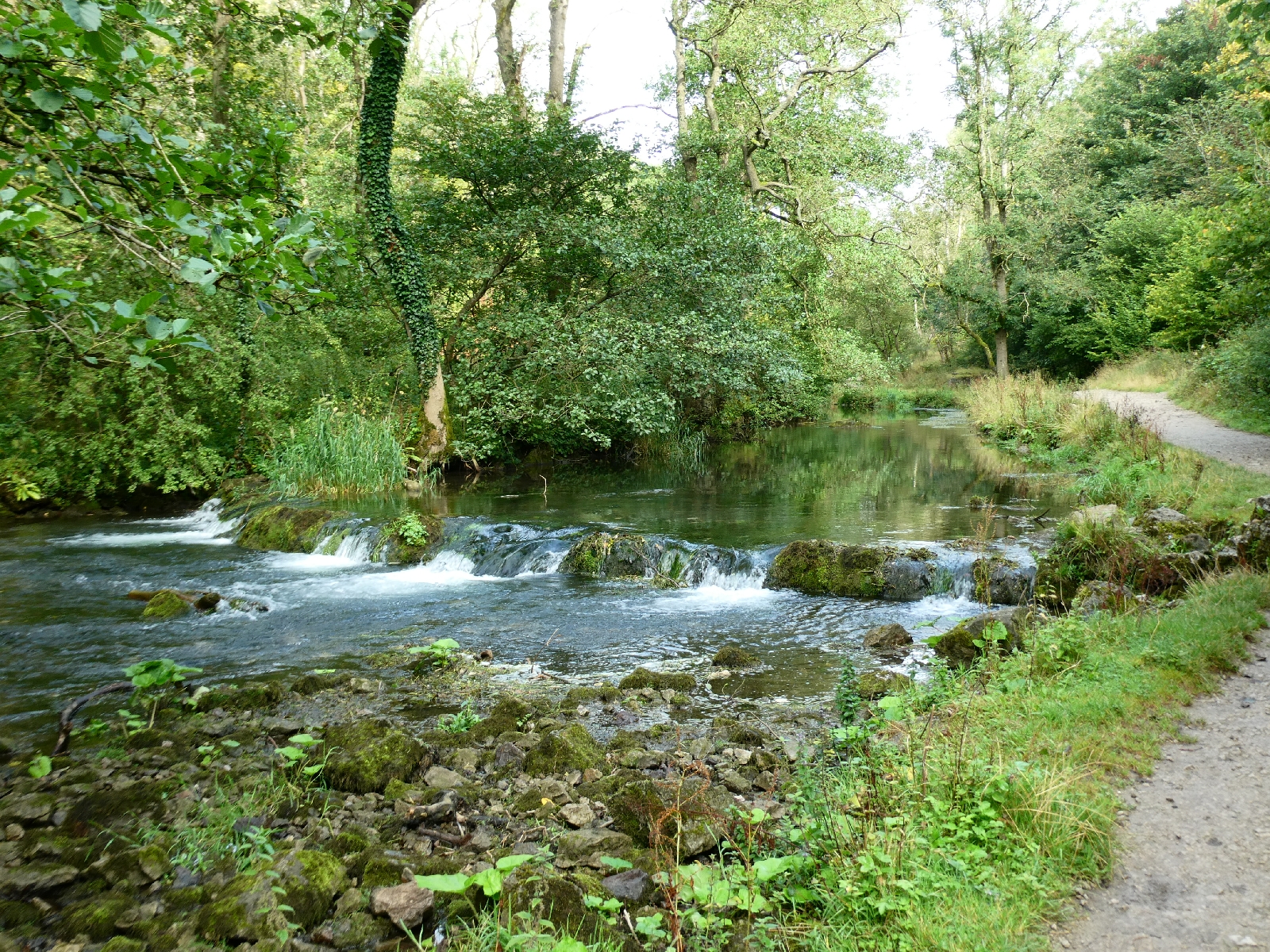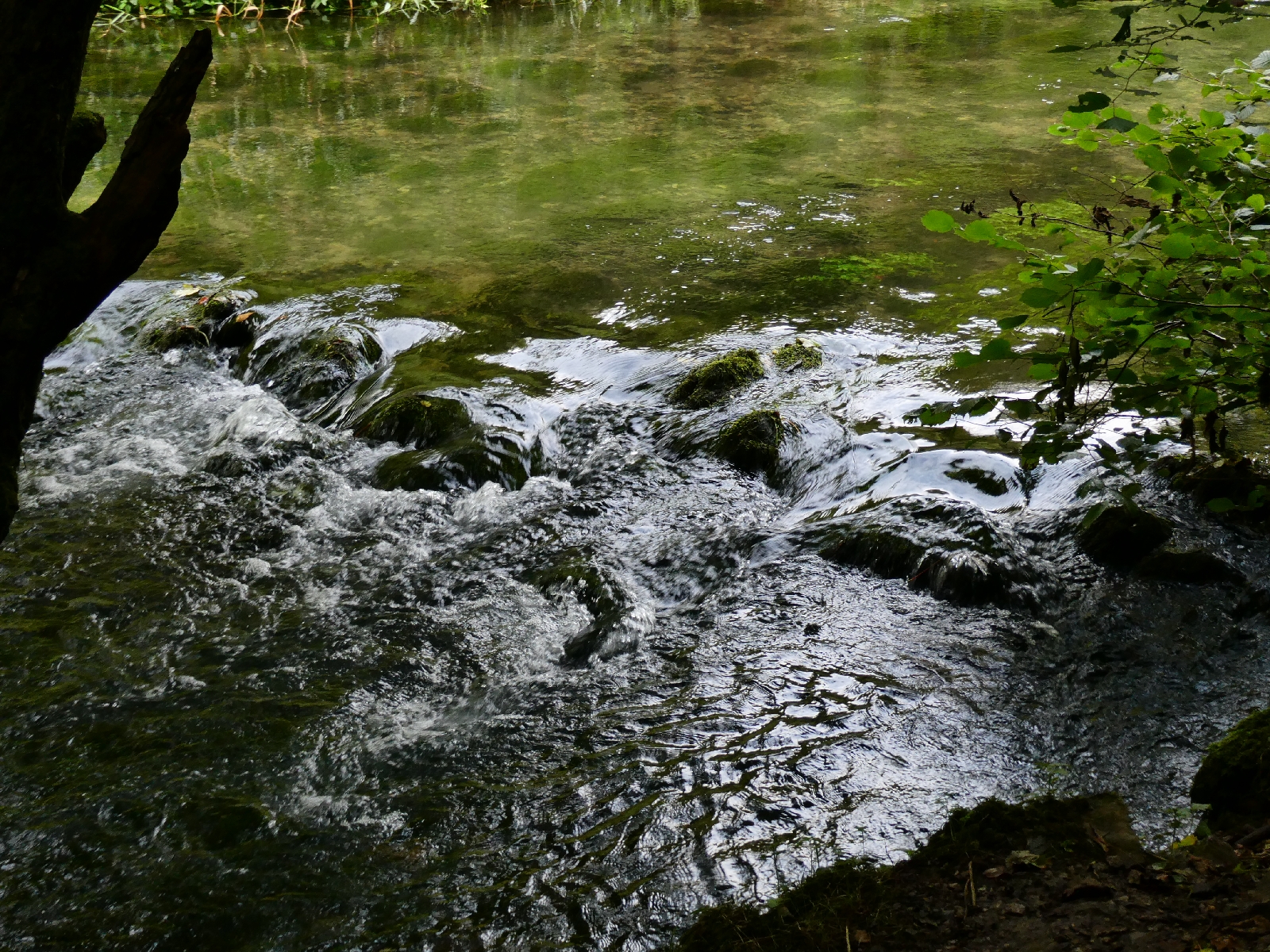Day 4, but day 3 of actual walking.
By tradition on these journeys, completing the third day is a good indication that the legs and feet will see out the rest of the trip.
This day 3 was challenging proof.
I entered Dovedale in watery sunshine, slipping past the empty tourist car park and crossing the little bridge to the east bank of the Dove.
The idea was to avoid being obliged to cross stepping stones carrying a full pack. The eastern path, passing the bottom of Thorpe Cloud, is frequently closed when the river is high, and even today I had to dip my Goretex-protected toes in the water to get through.
The stepping stones have only just been replaced. They were badly damaged by debris in the storms earlier in the year, and the last was put back in place on steel pins only last week.
Beyond the stones there were very few walkers on a Wednesday morning, so I had the sights to myself - Tissington Spires, the caves at Dove Holes, the steep lump of Ilam Rock, and of course the river.
This part of the
Dove valley ends at the little grey hamlet of Milldale, matched today by grey weather.
A short way along the lane the valley jaunt resumes, the river a little smaller and tamer, the valley more green than rocky.
It drizzled, in defiance of a forecast of "zero precipitation", but thankfully not for long.
I walked that valley for a couple of miles, seeing nobody for half of it, then a series of teenage groups for the rest.
I turned off into Biggin Dale, a long dry valley running east, my general direction for the rest of the day. In theory the path here is a bridleway, in practice it's a stony jumbly nightmare for almost the whole 2½ miles.
The last dale of the day was Longdale. It is, almost 3 miles, threaded by a little road, and gently rising until the end of it, crossing the Tissington Trail (see yesterday's entry) is around 1,000 feet above the sea.
The eastward continuation goes on climbing until it reaches the turn off for Arbor Low. This is a Neolithic henge monument and stone circle standing just over 1,200 feet up. The henge is believed to date to sometime before 3,500BCE, while the stones, around 40 of them quarried locally, are thought to have been added a thousand years or so later. In the greyness of this afternoon it was an evocative sight.
The journey from here followed a long straight road with views across the limestone plateau, finally descending steeply to the old stone bridge at Conksbury, crossing the Lathkill river.
The very steep climb after the bridge was, I hoped, the last of the day...
So then in a couple more miles to the old stone town of Bakewell, home of the famous pudding, and my resting place for tonight.



















No comments:
Post a Comment